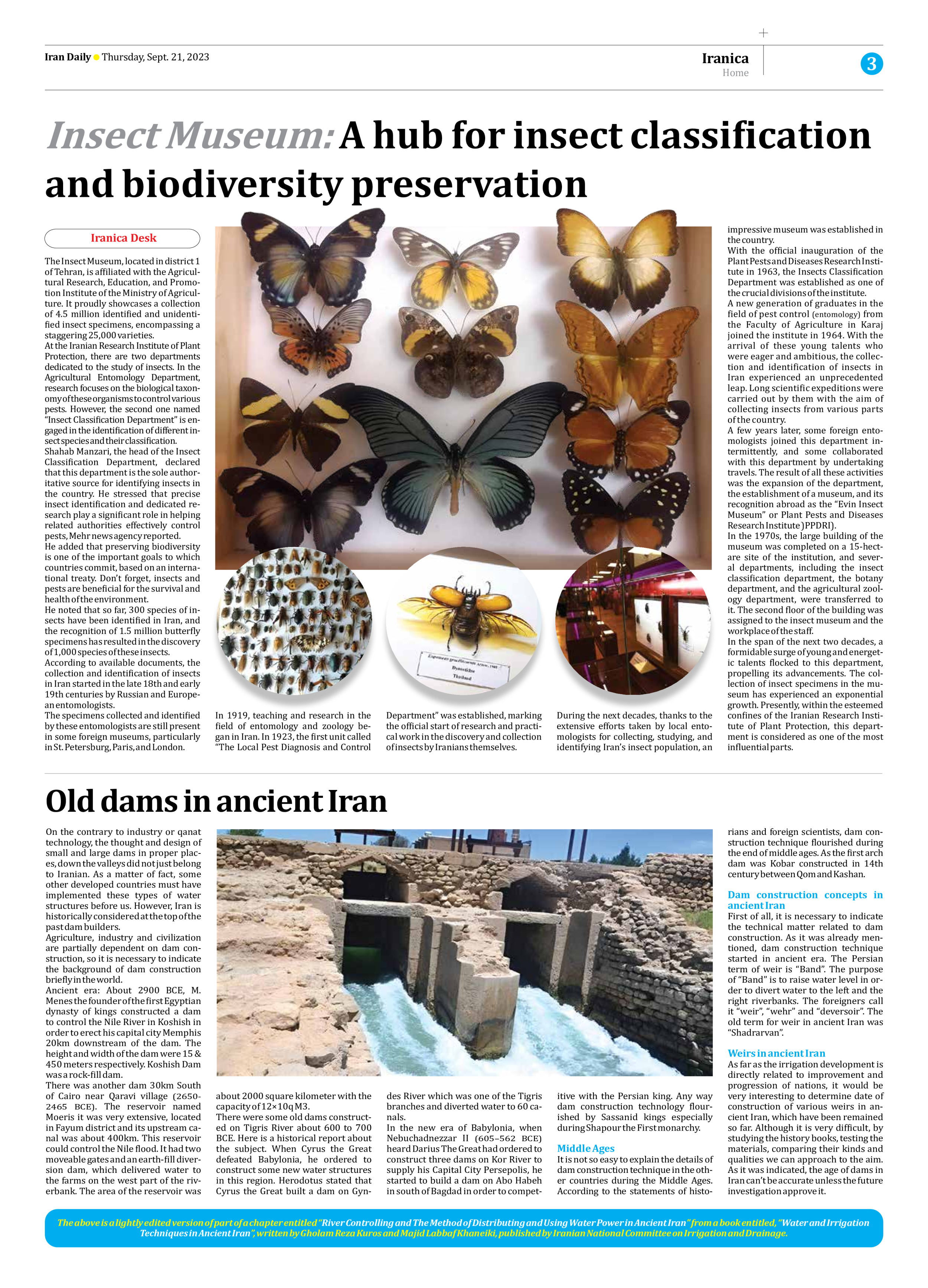
Old dams in ancient Iran
On the contrary to industry or qanat technology, the thought and design of small and large dams in proper places, down the valleys did not just belong to Iranian. As a matter of fact, some other developed countries must have implemented these types of water structures before us. However, Iran is historically considered at the top of the past dam builders.
Agriculture, industry and civilization are partially dependent on dam construction, so it is necessary to indicate the background of dam construction briefly in the world.
Ancient era: About 2900 BCE, M. Menes the founder of the first Egyptian dynasty of kings constructed a dam to control the Nile River in Koshish in order to erect his capital city Memphis 20km downstream of the dam. The height and width of the dam were 15 & 450 meters respectively. Koshish Dam was a rock-fill dam.
There was another dam 30km South of Cairo near Qaravi village (2650-2465 BCE). The reservoir named Moeris it was very extensive, located in Fayum district and its upstream canal was about 400km. This reservoir could control the Nile flood. It had two moveable gates and an earth-fill diversion dam, which delivered water to the farms on the west part of the riverbank. The area of the reservoir was about 2000 square kilometer with the capacity of 12×10q M3.
There were some old dams constructed on Tigris River about 600 to 700 BCE. Here is a historical report about the subject. When Cyrus the Great defeated Babylonia, he ordered to construct some new water structures in this region. Herodotus stated that Cyrus the Great built a dam on Gyndes River which was one of the Tigris branches and diverted water to 60 canals.
In the new era of Babylonia, when Nebuchadnezzar II (605–562 BCE) heard Darius The Great had ordered to construct three dams on Kor River to supply his Capital City Persepolis, he started to build a dam on Abo Habeh in south of Bagdad in order to competitive with the Persian king. Any way dam construction technology flourished by Sassanid kings especially during Shapour the First monarchy.
Middle Ages
It is not so easy to explain the details of dam construction technique in the other countries during the Middle Ages. According to the statements of historians and foreign scientists, dam construction technique flourished during the end of middle ages. As the first arch dam was Kobar constructed in 14th century between Qom and Kashan.
Dam construction concepts in ancient Iran
First of all, it is necessary to indicate the technical matter related to dam construction. As it was already mentioned, dam construction technique started in ancient era. The Persian term of weir is “Band”. The purpose of “Band” is to raise water level in order to divert water to the left and the right riverbanks. The foreigners call it “weir”, “wehr” and “deversoir”. The old term for weir in ancient Iran was “Shadrarvan”.
Weirs in ancient Iran
As far as the irrigation development is directly related to improvement and progression of nations, it would be very interesting to determine date of construction of various weirs in ancient Iran, which have been remained so far. Although it is very difficult, by studying the history books, testing the materials, comparing their kinds and qualities we can approach to the aim. As it was indicated, the age of dams in Iran can’t be accurate unless the future investigation approve it.
The above is a lightly edited version of part of a chapter entitled “River Controlling and The Method of Distributing and Using Water Power in Ancient Iran” from a book entitled, “Water and Irrigation Techniques in Ancient Iran”, written by Gholam Reza Kuros and Majid Labbaf Khaneiki, published by Iranian National Committee on Irrigation and Drainage.







